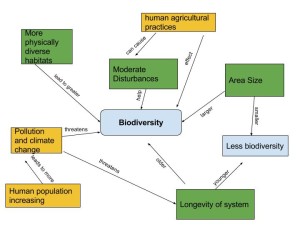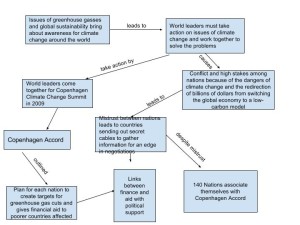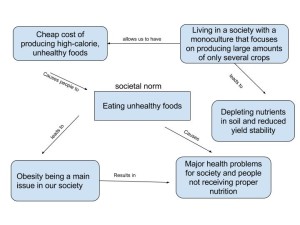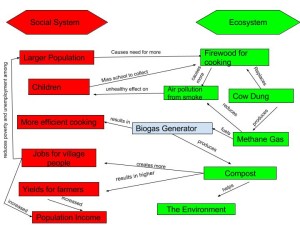In this module we learned about biodiversity and how it coincides with our ecosystem. In previous modules we discussed the idea of coupled human-environment systems. For this assignment, draw on concepts introduced in this module as well as concepts from previous modules.
- Create a diagram that outlines the coupled human-environment system of biodiversity and the factors that influence it. Be sure to make a clear outline using arrows that show how factors lead to more or less biodiversity.
- Using your diagram, decide which factor that influences biodiversity is most in your control? What steps can you take to protect the environment given how that factor influence biodiversity? (150-200 words)
- Draw on your own experiences. Have you ever been to “protected area”? If not, what is the closest “protected area” to where you live? How does this area differ from your own town or region? (150-200 words)
2) The thing that is most in our control when it comes to factors that influence biodiversity is pollution to our environment. Being that I have no influence on agriculture and that I have no control over the size of human population, the factor that I can help with most is by reducing the pollution I emit to the Earth. Bioaccumulation occurs when pollutants become concentrated in animal tissue as they move up the food chain. Increasing these chemicals in our ecosystem allows for an increasing concentration found in animals on the smaller end of the food chain. When these persistent organic pollutants are incorporated in smaller organisms like plankton and bacteria, they move through our entire food chain and affect the entire ecosystem. It is so important to maintain a diverse system and by reducing pollution, we will be able to continue to do this. As humans, it is our responsibility to sustain biodiversity for future generations to come.
3) When I visited Ireland over spring break, I was able to explore many beautiful areas of the countryside. One of my favorite places was Killarney National Park, located in County Kerry. The park is home to the largest mountain range in Ireland, the Ring of Kerry. National parks are a category 2 IUCN protected area. The park is definitely a source of ecotourism for the area which is most likely why a small city was built next to the park. While the area is a big spot for tourists, the reason it has been able to remain such a beautiful park is because of the regulations of local government. In New Jersey, I have never been to a park that was as largely kept up as Killarney National Park. Ireland is a country that has a lot less industrialization than America. I believe this is the reason Ireland’s parks and countryside have maintained biodiversity.




